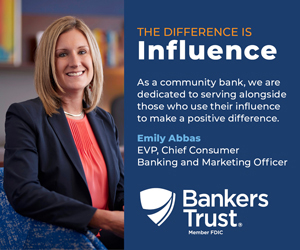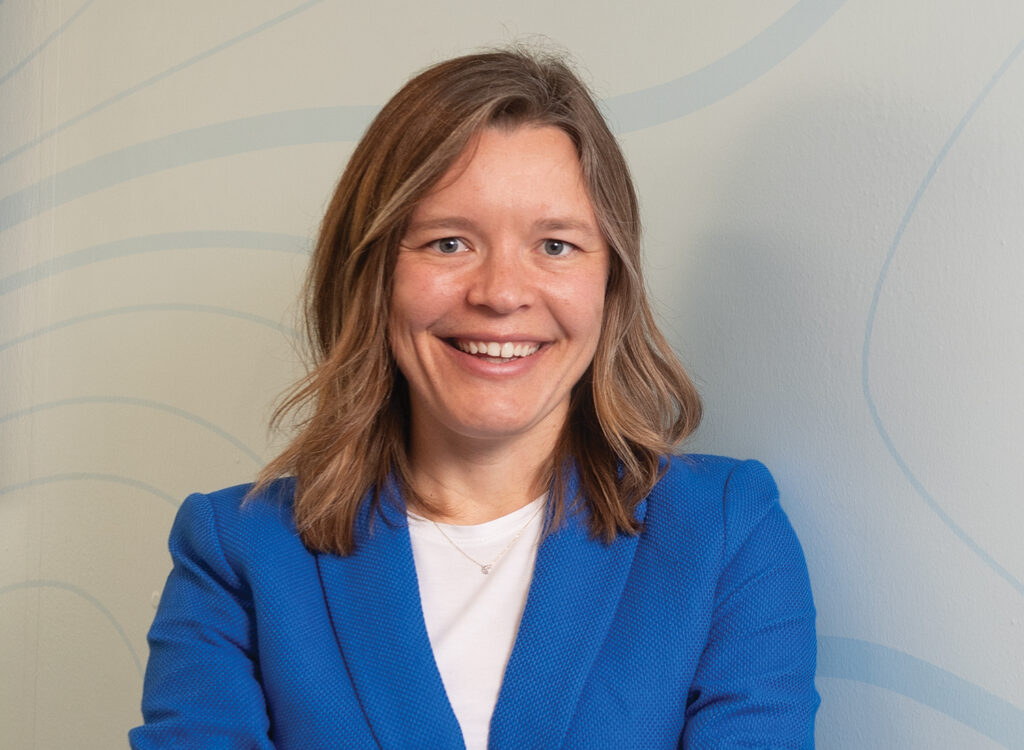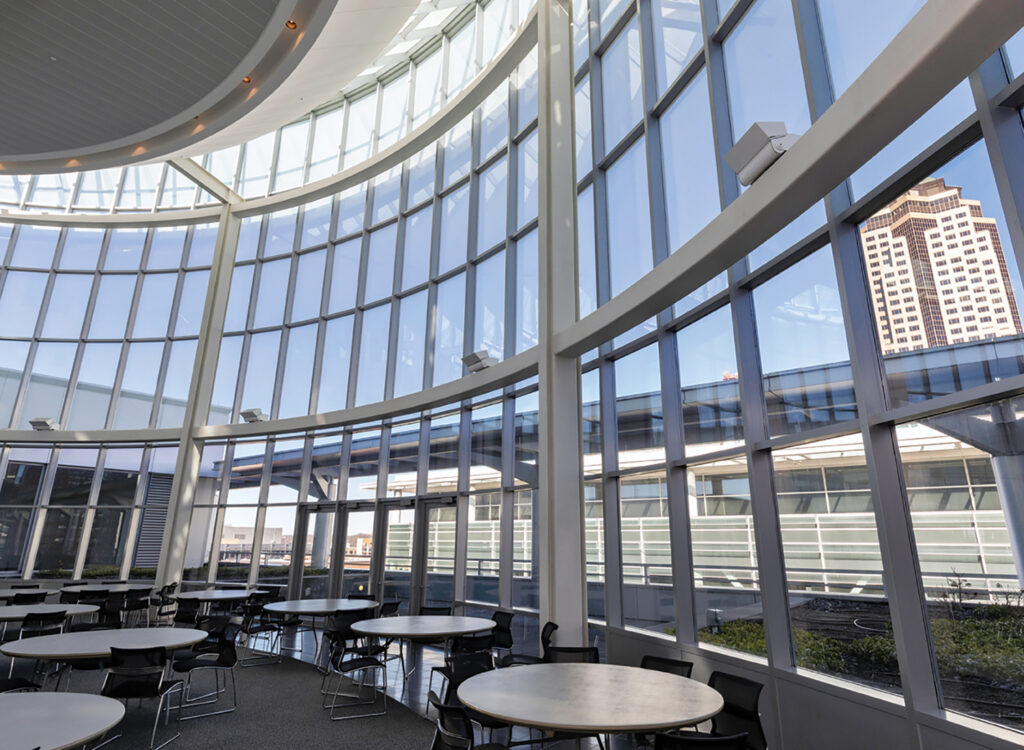A Closer Look: Susan Bunz
Executive director, Meals from the Heartland

Shortly after Susan Bunz was laid off in 2014 from DuPont Pioneer, she got a call from Jerry Armstrong, board chair of Meals from the Heartland, encouraging her to join the nonprofit with which she had frequently volunteered. She was hired as executive director in March 2015, succeeding Dave Bradley when he retired. “What I loved was there are clear similarities between Pioneer [now Corteva Agriscience] feeding the world and our mission at Meals from the Heartland of feeding the world,” Bunz said. The nonprofit organization last year engaged more than 77,000 volunteers who donated funds and packaged more than 19 million meals. The easy-to-prepare meal pouches are shipped to children’s feeding programs in about 13 countries around the world, as well as distributed by food pantries in Des Moines and elsewhere in the country. Earlier this year Meals from the Heartland completed its first packaging event outside of Iowa — in Chicago — and is aiming to add an event in Kansas City as well. The organization has expanded from three staff members to 10 over the past four years and in 2019 has a goal to package 25 million meals.
What have been some key hires you’ve made?
When I came in, we really tried to evaluate: What are some of the things we need to do if we’re really going to grow? We had a volunteer who helped run the warehouse, and we still have a volunteer who manages a lot of the financial aspects. I started by adding a director of operations who would have a little more time to really be looking at our pricing and ensuring that we’re using our charitable dollars as efficiently as possible. And he has responsibility for a lot of our guys who are going out and doing mobile packaging events and keeping all that coordinated. And last year we engaged about 77,000 people who packaged or labeled with us, so I thought a volunteer coordinator probably makes a lot of sense. There’s a lot that goes on here in our packaging center and also ensuring that we have appropriate volunteers to go out with our mobile packs to make sure it’s a well-run pack.
What’s new with the operation this year?
We have begun having groups come in to prepare labels so that the packaging volunteers can focus on packing. The labeling was something that [Volunteer Coordinator Sandy Niland] initiated. In addition to having groups of seniors and special needs groups like LINC Associates and Easter Seals come in to our facility to label, she has also reached out to senior living communities to have them do labeling at their facilities. We also developed our own taco mac meal designed to be more appealing to families in the U.S., and we’ve installed tall racking in our warehouse to store the materials and to be more organized and productive.
How did the packaging event in Chicago come about?
That happened through ITA Group, which was putting together a corporate meeting for Corteva Agriscience. They wanted to have an aspect of their meeting that wasn’t just focused on their business, but was focused on giving back. And so we’re very fortunate they thought of us as a great way to do that. In doing two hours of packaging, you’re feeding 400 people. To expand in the future, we really need to expand the borders of where we’re doing our work to get the mass of people necessary to package the number of meals that we do.
We also have to expand to be able to continue to raise the dollars that are necessary to be able to package. I think one of the common misconceptions about Meals from the Heartland is that there is someone donating all of the food. Early on when I would go to speak to groups they would ask, “Who donates your food?” And I would tell them no one donates our food — we have to raise the dollars every year to enable us purchase the rice and soy and vitamin powder and dried vegetables or the ingredients for taco mac that we need to make the meals. And so in order to get the people and the dollars to continue to expand, we need to we need to go beyond the borders of Iowa.
There were over 23 million meals packaged in 2017; why the dip to 19 million in 2018?
When we’re raising funds, part of the funds that we’re raising is to buy the food that people package during open packaging events [held Tuesdays through Saturdays at the West Des Moines packaging facility]. And that’s really because we’re empowering people to save the starving — and not just those who can afford to save the starving. Many times, we see kids through the high school programs who come in and say, “I’ve eaten this food [that my family received through a food pantry]. And now I get to package it and give back to someone else.” But last year, we backed down a little bit on the number, just because our fundraising had dropped a little bit and we just couldn’t afford to have as many open package events as as we previously had. So now we’ve opened it back up this year. We’re still a little bit behind this year because the winter weather was a little bit of a problem for us when schools closed.
What’s the proportion of overseas versus domestic meals?
About 10% of the meals that we make stay here domestically. We work very closely with the DMARC food pantries and Midwest Food Bank, which is based in Bloomington, Ill. They have a number of different pantries around around the United States. Convoy of Hope in Missouri is our logistics partner; they do some U.S. distribution and they have some rural initiatives that they partake in every year. [Overseas], Convoy of Hope has feeding initiatives in both schools and orphanages, and so our meals go towards feeding those children where it’s probably the only meal they will get in a day. They’re a disaster relief agency as well. For instance, they were there when the hurricanes hit Texas, Florida, the Virgin Islands and Puerto Rico. We sent a significant amount of meals — about 75 million — to those areas.
What do you enjoy doing when you’re not here?
I love to bike. I read, and I’m really adjusting now to finding new things to do after spending many, many years following my children’s sports activities, which took up a bulk of my time. My youngest is graduating from high school this year. She’s a soccer player. I also serve on the Waukee school board, so that takes a fair amount of time as well. And I’m on the Polk County Health Services board. So I have some board activities that I really enjoy and love just spending time with with my friends and my kids when I get the chance.








